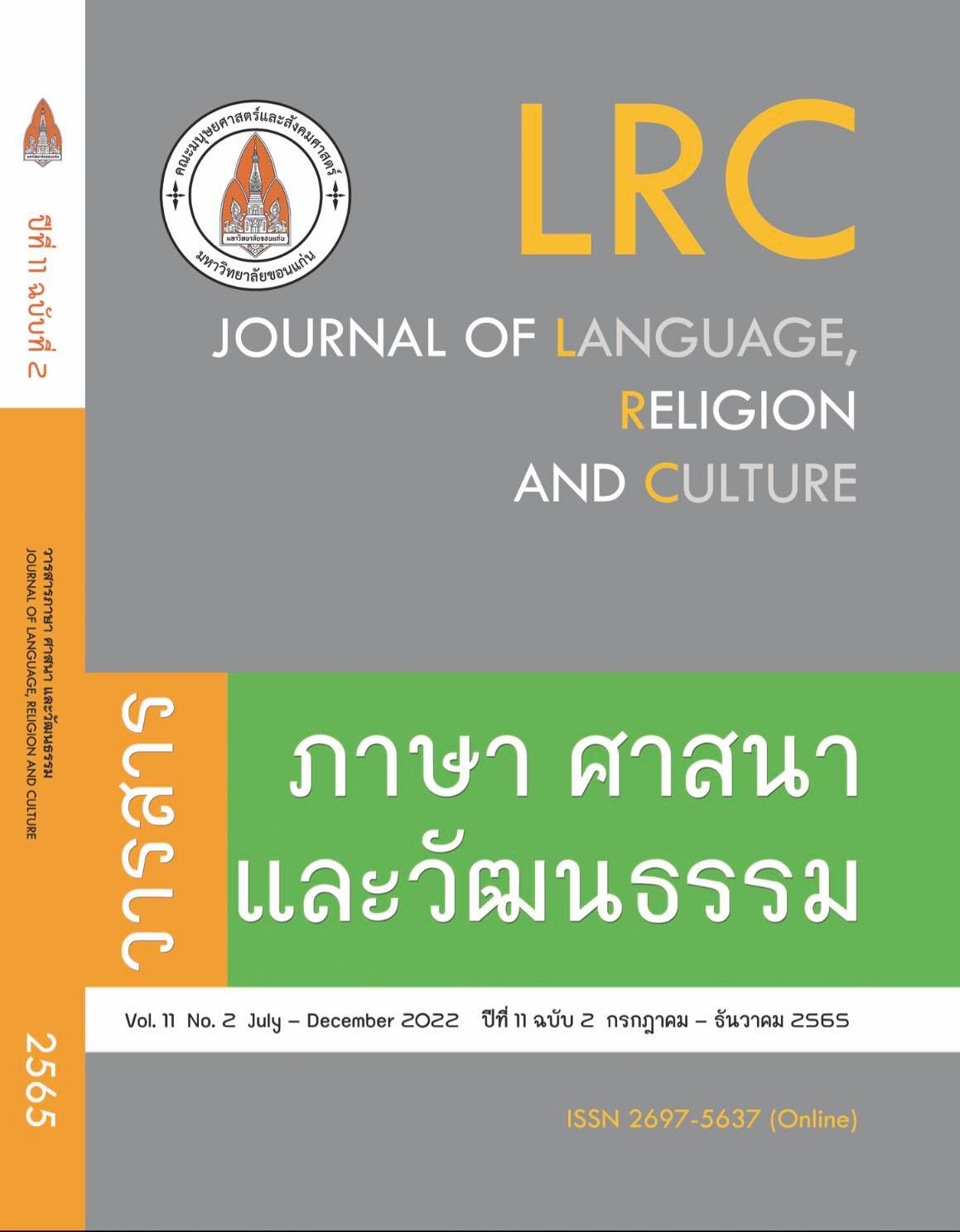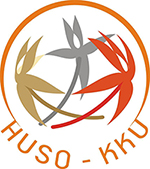ความเป็นมาและการถ่ายทอดฟ้อนสาวไหมสายสกุลช่างฟ้อนนางบัวเรียว รัตนมณีภรณ์
ความเป็นมาและการถ่ายทอดฟ้อนสาวไหมสายสกุลช่างฟ้อนนางบัวเรียว รัตนมณีภรณ์
คำสำคัญ:
การถ่ายทอด, ฟ้อนสาวไหม, นางบัวเรียว รัตนมณีภรณ์บทคัดย่อ
บทความวิจัยมีวัตถุประสงค์ เพื่อศึกษาความเป็นมาของการสืบทอดฟ้อนสาวไหมสายสกุลช่างฟ้อนนางบัวเรียว รัตนมณีภรณ์ และเพื่อศึกษาการถ่ายทอดฟ้อนสาวไหมสายสกุลช่างฟ้อนนางบัวเรียว รัตนมณีภรณ์การดำเนินการวิจัยใช้กระบวนการวิจัยเชิงคุณภาพ โดยศึกษาจากเอกสารที่เกี่ยวข้อง ลงพื้นที่เพื่อรวบรวมข้อมูลจากการสัมภาษณ์ การสังเกตการณ์ การฝึกปฏิบัติท่าฟ้อน และนำข้อมูลที่ได้มาวิเคราะห์โดยใช้วิธีพรรณนา
ผลการวิจัยพบว่าความเป็นมาฟ้อนสาวไหมสายสกุลช่างฟ้อนนางบัวเรียว รัตนมณีภรณ์ มีความเป็นมาจากองค์ความรู้จากสายตระกูล และองค์ความรู้จากสายอุปถัมภ์ ในส่วนลักษณะการถ่ายทอดพบว่ามีหลักเกณฑ์ในการถ่ายทอดจำนวน 5 ประการ คือ 1) ความสัมพันธ์ระหว่างผู้ถ่ายทอดและผู้รับการถ่ายทอด 2) โอกาสในการถ่ายทอดองค์ความรู้ 3) การถ่ายทอดความรู้เดี่ยวเฉพาะบุคคล 4) การถ่ายทอดความรู้เป็นกลุ่ม และ5) การประเมินผลการถ่ายทอด โดยลักษณะผู้รับการถ่ายทอดสามารถแบ่งออกเป็น 2 ลักษณะ คือ การถ่ายทอดความรู้เดี่ยว เฉพาะบุคคล ซึ่งมุ่งเน้นการฝึกหัดให้ผู้รับการถ่ายทอดสามารถฟ้อนได้ถูกต้องตามมาตรฐานที่กำหนดไว้ และการถ่ายทอดความรู้เป็นกลุ่ม ซึ่งจะประเมินจากข้อจำกัดของผู้รับการถ่ายทอดในแต่ละกลุ่ม ซึ่งพบว่ามีผู้รับการถ่ายทอดความรู้เป็นกลุ่ม สามารถจำแนกออกเป็น 3 กลุ่ม ได้แก่ กลุ่มเยาวชน ซึ่งมีข้อจำกัดด้านสมาธิ กลุ่มผู้สูงอายุ ซึ่งมีข้อจำกัดด้านร่างกาย และกลุ่มสถาบันการศึกษา มีข้อจำกัดตามที่กำหนดไว้ในหลักสูตรของสถาบันการศึกษานั้น
เอกสารอ้างอิง
เพียงแพน สรรพศรี และยุทธนา ฉัพพรรณรัตน์. (2563). การศึกษากระสวนทางการบรรเลงสะล้อของครูพรหเมศวร์สรรพศรี (ครูภูมิปัญญาไทย). วารสารมนุษยศาสตร์และสังคมศาสตร์มหาวิทยาลัยราชภัฏอุบลราชธานี, 11(1), 110. สืบค้นจาก https://so01.tci-thaijo.org/index.php/humanjubru/article/download/218251/164414/
ประภัสสร วรปรางกุล. (2561). นาฏยลักษณ์ฟ้อนสาวไหม. วารสารศิลป์ปริทัศน์ คณะศิลปกรรมศาสตร์มหาวิทยาลัยราชภัฏสวนสุนันทา, 6(2), 95. สืบค้นจาก https://so01.tci-thaijo.org/index.php/APJ/article/view/159744
บัวเรียว รัตนมณีภรณ์. (2564, 28 มิถุนายน). ศิลปินแห่งชาติ [บทสัมภาษณ์].
บุญชม วงค์แก้ว. (2564, 16 มิถุนายน). หัวหน้าคณะสายทิพย์เชียงราย ดนตรีพื้นเมืองล้านนา [บทสัมภาษณ์].
พูนพิศ อมาตยกุล. (2545-2550). อาศรมดนตรีวิทยา. กรุงเทพฯ: มหาวิทยาลัยมหิดล.
ไพโรจน์ ทองคำสุก. (2544). วิเคราะห์รูปแบบความเป็นครูสู่กระบวนการถ่ายทอดความรู้ของผู้เชี่ยวชาญนาฏศิลป์ไทย ครูเฉลย ศุขะวณิช (พิมพ์ครั้งที่1). กรุงเทพฯ: สถาบันนาฏดุริยางคศิลป์ กรมศิลปากร
รุจนจรุง มีเหล็ก. (2548). ฟ้อนสาวไหม : กรณีศึกษาบัวเรียว รัตมณีภรณ์ และคำ กาไวย์.
(วิทยานิพนธ์ศิลปศาสตรมหาบัณฑิต ไม่ได้ตีพิมพ์). จุฬาลงกรณ์มหาวิทยาลัย. กรุงเทพฯ.
วัลยา ไชยพรม และรัตนา ณ ลำพูน. (2559). การจัดการความรู้นาฏศิลปพื้นบ้านล้านนา เรื่อง การฟ้อนสาวไหม. วารสารสารสนเทศศาสตร, 34(4), 30. สืบค้นจาก https://so03.tci-thaijo.org/index.php/jiskku/article/download/81038/74936/
สนั่น ธรรมิ. (2564, 20 กรกฎาคม). นักวิชาการศึกษาด้านส่งเสริมศิลปวัฒนธรรม มหาวิทยาลัยเชียงใหม่ [บทสัมภาษณ์].
อนุกูล โรจนสุขสมบูรณ์. (2549). แนวคิดทฤษฎีการฟ้อนล้านนาแบบใหม่. (วิทยานิพนธ์ศิลปศาสตรดุษฎีบัณฑิต). จุฬาลงกรณ์มหาวิทยาลัย. กรุงเทพฯ.
ดาวน์โหลด
เผยแพร่แล้ว
รูปแบบการอ้างอิง
ฉบับ
ประเภทบทความ
สัญญาอนุญาต
ลิขสิทธิ์ (c) 2022 วารสารภาษา ศาสนา และวัฒนธรรม

อนุญาตภายใต้เงื่อนไข Creative Commons Attribution-NonCommercial-NoDerivatives 4.0 International License.







